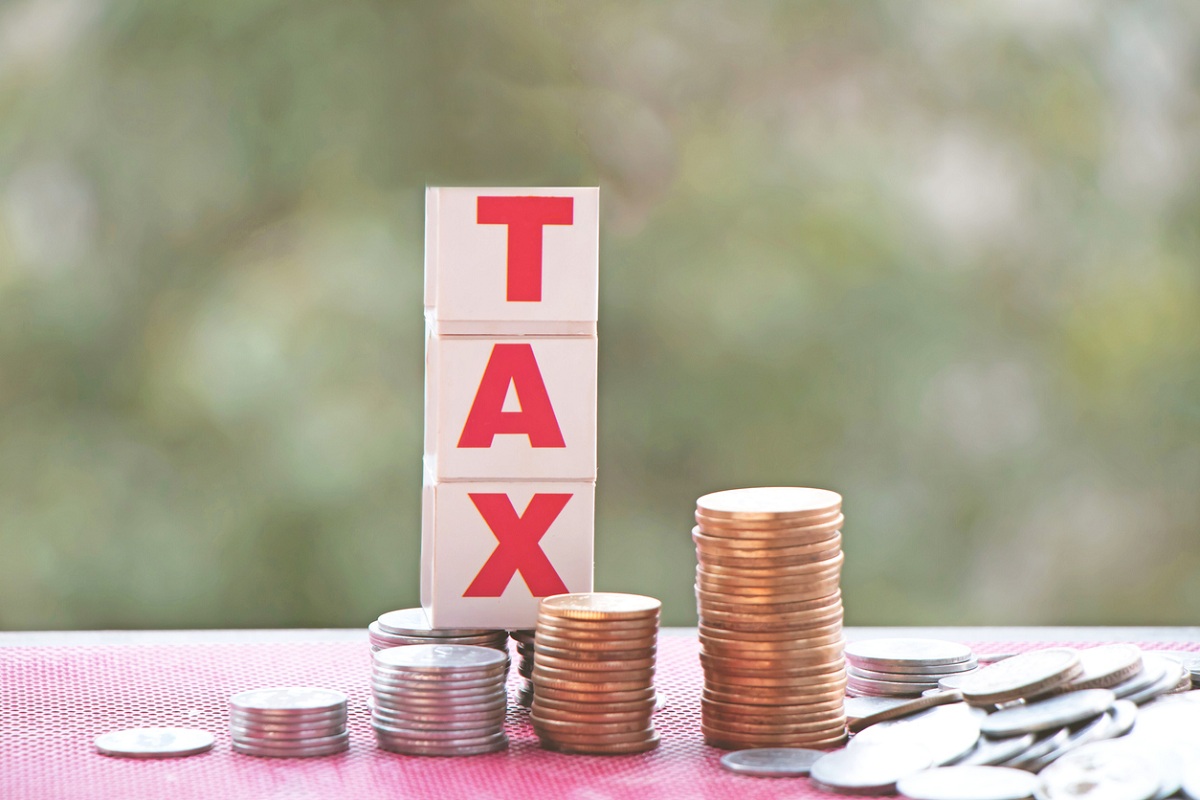The great American jurist, Oliver Wendell Holmes Jr., a judge of the Supreme Court of the United States from 1902 to 1932, wrote “I like to pay taxes. With them, I buy civilization” (Compañía General de Tabacos de Filipinas v. Collector of Internal Revenue). These immortal words are etched on the IRS building in Washington D.C., providing inspiration to taxmen the world over. However, few modern tax systems excite such thoughts in the hearts of taxpayers, with taxpayers feeling that most tax regimes are far too complicated, iniquitous, and designed to favour big businesses.
Taxation on a scientific basis has a long history in India. Chanakya’s “Arthashastra,” the ancient Sanskrit treatise on statecraft, economic policy and military strategy dating to 300 BC, advised the King to observe restraint in taxing subjects, to be fair in levying tax, and to collect tax like a bee collects pollen. According to Chanakya, taxes should be convenient to pay, easy to calculate, inexpensive to administer, equitable and non-distortive, and should not inhibit growth. Arthashastra was far ahead of its time; governments in the twenty-first century struggle to incorporate Chanakiyan principles in their taxation systems.
Advertisement
“Kosh Mulo Dandah”, meaning “revenue is the mainstay of administration,” is a tenet from the Arthashastra, adopted by the Indian Incometax Department as its logo. Income-tax, in its modern form, was introduced in India by the British in 1860, to recoup the losses incurred by them in the First War of Independence. Because of these murky origins, evasion of Income-tax was not considered dishonourable, and till the 1980’s, with a mere 20 per cent share in the tax pie, Direct Taxes (mainly Income-tax) lagged far behind Indirect Taxes (Customs and Excise), which accounted for 80 per cent of the tax collected.
After liberalisation, along with the economy, tax collection and the share of direct taxes in aggregate tax collection started rising. Collection of direct taxes rose from Rs 10,606 crore in FY 1990-91 to Rs 68,305 crore in FY 2000-01, to Rs 4,45,995 crore in 2010-11 and to Rs 11,37,685 crore in FY 2018-19. The share of Direct Taxes in tax revenues rose concomitantly to 36.31 per cent in FY 2000-01, surpassing Indirect Tax collection in FY 2007-08 and exceeding 56 per cent of total tax revenues in FY 2013-14 and FY 2014-15. This was a welcome development because Direct Taxes are progressive, aimed at the rich, while Indirect Taxes are regressive, affecting the poor more than the rich.
However, ad-hoc changes in the tax structure in the last five years have reversed this healthy trend. Direct Tax collections have started falling behind Indirect Tax collections. In Financial Year 2019-20, Indirect Tax collections stood at Rs 12.22 lakh crore while Direct Tax collections were Rs.10.50 lakh crore. The extortionate levies on petroleum products are one of the symptoms of the deep-rooted malaise in the taxation system; despite the cascading effect of fuel prices on inflation, the Centre raised taxes on petrol by 300 per cent from Rs 10.38 per litre in March 2014 to Rs 32.98 per litre in September 2020 and hiked taxes on diesel by 600 per cent, from Rs 4.58 per litre to Rs 31.83 per litre, during the same period.
Even with petrol and diesel prices crossing the century mark and the public vociferously demanding reduction in taxes, neither the Central Government nor State Governments are inclined to oblige ~ both being addicted to a convenient source of revenue. GST, promoted as a good and simple tax, has proved to be the exact opposite. GST is levied in five different tax slabs: 0%, 5%, 12%, 18% and 28%. Additionally, there is a special rate of 0.25 per cent for rough precious and semi-precious stones and 3 per cent on gold. A cess of 22 per cent on top of 28 per cent GST is levied on items like aerated drinks, luxury cars and tobacco products.
Multiple tax rates force businesses to classify inputs and outputs based on the applicable tax rate which makes compliance onerous for small businesses. Further, to claim input tax credit, a firm requires to match invoices between outputs and inputs; such exercises increase the compliance burden and the compliance cost. Due to slow refund processing, working capital gets locked up, and complicated administrative processes often lead to frauds. Most countries have a single rate of GST: 49 countries use a single rate, 28 use two rates, and only five countries ~ India, Italy, Luxembourg, Pakistan and Ghana ~ use four rates. Interestingly, India has the second-highest GST rate among 115 countries studied by the World Bank.
The World Bank’s India Development Update, 2018 called India’s GST regime too complex. Simplification of processes, moving towards one slab of taxation and most importantly, reduction in rates are required to reform GST. Anomalous trends have also emerged in the Income-tax regime. Due to frequent tinkering by the annual Finance Acts (and sometimes in mid-year also), the Incometax Act has lost much of its logic and equity. A disturbing sign is that Personal Incometax collections often exceed Corporate Tax collections, meaning that individuals and small businesses are bearing the brunt of taxation.
Due to the lowering of Corporate Tax rates in Budget 2019, Corporate Tax collections had fallen by 16 per cent in 2019-20. Significantly, according to CMIE data, the profitability of listed companies grew by 212.4 per cent in the last quarter of FY 2020-21, and their revenues increased by 14.7 per cent, yet Corporate Tax collections fell by 18 per cent in FY 2020-21. The reason for this anomaly is that individuals are taxed at 30 per cent (on income exceeding Rs.15 lakhs) and firms are taxed at 30 per cent on all income, while manufacturing companies are taxed at 15 per cent and nonmanufacturing companies are taxed at 22 per cent.
Given the requirement of numerous statutory compliances for corporates, smaller businesses are generally organised as firms, so a higher taxation rate for firms disincentivizes small businesses, which are generally labour intensive. Therefore, to promote small businesses and generate employment, tax rates for firms should be brought on par with that of corporates. The cost to the exchequer would not be high; Incometax Departmental statistics for the assessment year 2018-19 show that the aggregate tax liability for 12,69,736 firms was Rs.42,993 crore while aggregate tax liability for 8,41,942 companies was Rs 4,31,041 crore.
Thus, halving the tax rate for firms would result in an outgo of less than Rs 20,000 crores, which could be made up in due course from the increased income of firms. Equity also dictates that after the tax write down of Rs 1,45,000 crore for corporates, smaller businesses should also be given some relief. Making the tax system more productive, by levying taxes on wealth and inheritance is another option before the Government. At the time of Budget making, impossible targets are set for tax collection. So every March, CBDT and CBIC direct field staff to go all out for collecting taxes, which prompts lower-level staff to adopt strong-arm measures, leading to charges of ‘tax terrorism’ and admonition by Courts.
This needless spectacle could be avoided by being realistic while framing the Budget. The rising inequalities in Indian society reflect the failure of the Direct Tax regime. During the last financial year alone, there was a 15 per cent increase in the poverty rate in rural, and a 20 per cent increase in urban areas, with 23 crore Indians being pushed back into poverty. In the same period, the earnings of the uber rich grew exponentially; India has added 55 billionaires in 2020, and Mukesh Ambani and Gautam Adani are now the richest persons in Asia, with Mr Ambani breaking into the US$100 billion club.
The deep-rooted structural problems of our tax system cannot be cured by ersatz solutions. A Direct Tax Code to simplify the Income-tax regime has been in the offing since 2010 and was last heard about in 2020, but nothing concrete has emerged. In fact, looking to the changes in the business environment, a Direct Tax Code may no longer be useful. Rather, a comprehensive tax code embodying both Direct and Indirect Tax provisions is required. Great Britain, from where we inherited our tax system, has integrated Direct Taxes (Inland Revenue) and Indirect Taxes (Customs and Excise) under Her Majesty’s Revenue and Customs Board in 2005, and the IRS Code 1986 of the US encompasses both Direct and Indirect Taxes.
We also have to proceed on similar lines so that taxpayers have to deal with only one agency for their taxation and the Indian tax system works as an integrated whole ~ not in the separate silos of CBDT and CBIC.
(The writer is a retired Principal Chief Commissioner of Income-Tax)











